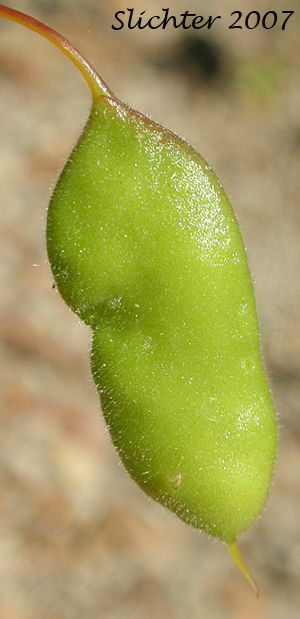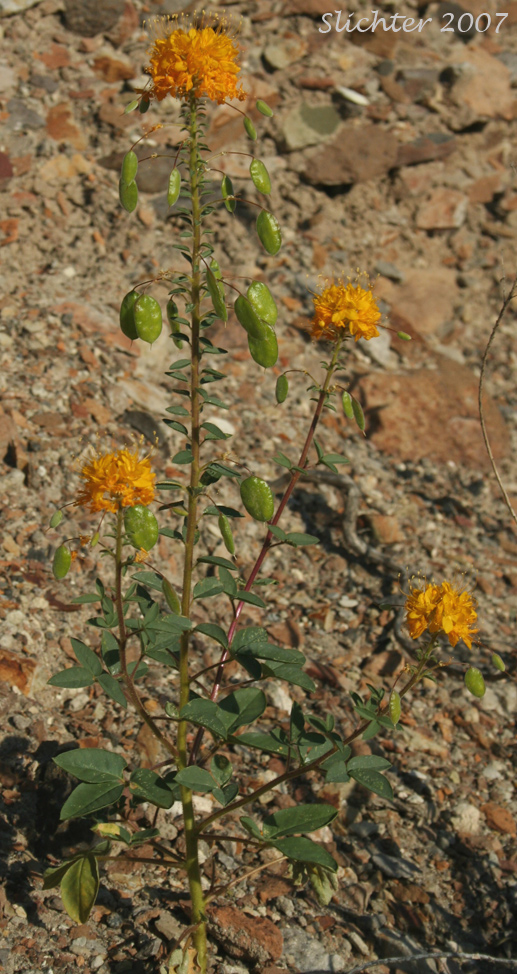[The Caper Family East of the Cascade Mountains of Oregon and Washington]
Golden Bee Plant, Golden Cleome, Golden Spiderflower, Golden Spider Flower
Cleome platycarpa
Synonym: Cleome platycarpa

Golden bee plant on the north side of the John Day River in Twickenham, OR.............May 28, 2007. Plants may consist of one unbranched stem or may be much-branched with an inflorescence at the end of each branch. Note the ovate
fruits which are beginning to form.
Characteristics:
Golden spiderflower is glandular. It is a simple to freely-branched
annual to 70 cm tall. It has a covering of glandular hairs.
The stem leaves are ternately compound (3 leaflets). The
leaflets are oval to lanceolate or oblanceolate, 10 to 25 mm in length. Typically,
the leaflets are about as long, or shorter than the leaf petioles.
The flowers have 4 sepals and 4 petals. The petals are yellow
and not clawed, and tend to be clustered at one side of the flower. They are
between 6 to 9 mm long. There are six stamens which are about twice the length
of the petals. The flowers are showy and attractive to pollinating insects.
They are borne in bracteate racemes which become very elongated when in fruit.
The spreading to reflexed seed capsules are ovate-oblong
in shape, being between 13 and 25 mm long.
 -
- 
These 2 photos show the trifoliate leaf of the golden bee plant. Note the numerous hairs along the petiole and along the margins of each leaflet. Photographed on the north side of the John Day River in Twickenham, OR...........May 28, 2007.
Habitat:
Golden bee plant lives in the sandy soil of desert plains and
into dry lower valleys in the foothills. It is also found in the heavy clays
of the John Day Valley of north central Oregon.
Range:
Golden bee plant is found from eastern Oregon east to adjoining
Idaho, and south to Nevada and California.
 -
- 
These photo above shows 2 close-ups of pods of golden bee plant as seen on the north side of the John Day River in Twickenham, OR.............May 28, 2007.

The photo above shows golden bee plant as seen on the north side of the John Day River in Twickenham, OR.............May 28, 2007.

Golden bee plant as seen on ash deposits along Oregon Highway 218 about 2 miles west of Clarno, OR..........May 16, 2010.

These photo above shows a slightly out of focus sideview of a flower of golden bee plant as seen on the north side of the John Day River in Twickenham, OR.............May 28, 2007. Note the spreading hairs on the pedicel and the back surface of the sepals and the hairy seed pod which is beginning to extend from the flower.

The photo above shows the inflorescence of golden bee plant as seen at the Painted Desert Unit of the John Day Fossil Beds National Monument.

Paul Slichter